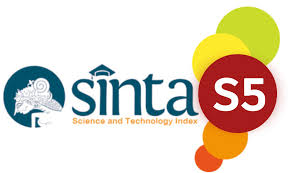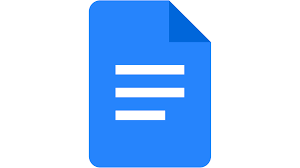Community-Based Waste Management Strategy through Waste Bank in Bintan Regency
Keywords:
Waste Bank, Waste Management, Bintan IslandAbstract
Along with population growth every year, the amount of waste in Bintan Regency continues to increase, where the volume of waste in Bintan reaches 19,499 tons/year. Through the Waste Bank, the Bintan Regency Government is trying to find a solution to this problem. The research aims to analyze the extent of public awareness of the Waste Bank, as well as find out how much gender involvement is in waste management through the Waste Bank in Bintan Regency. The research method is Qualitative through Survey - Descriptive methods. Based on research results obtained from 12 active Waste Banks in Bintan, management and customers have a high level of awareness of Waste Banks at 59.6%. However, public awareness in managing and being involved in Waste Banks is still lacking at 63.5%, and effectiveness The waste bank is still rated as undervalued at 51.9%. For gender involvement, it was found that women looked more active and dominating than men. The Waste Bank in Bintan Regency is currently only a side job, not the main job for earning a living.
References
Achmad, W. (2023) ‘The Role of Housewives in Handling the Waste Problem in Pekanbaru City’, Jurnal eduhealth, 14(01), pp. 85–90. Available at: http://ejournal.seaninstitute.or.id/index.php/healt/article/view/1359%0Ahttp://ejournal.seaninstitute.or.id/index.php/healt/article/download/1359/1096.
Angraini, P.D.S.N. (2023) ‘Legal effectiveness of independent waste management through waste banks in the City of Tegal as an effort to empower and care for the environment’, The International Journal of Politics and …, 11(32), pp. 195–204. Available at: https://www.ijobsor.pelnus.ac.id/index.php/ijopsor/article/view/155%0Ahttps://www.ijobsor.pelnus.ac.id/index.php/ijopsor/article/download/155/127.
Aprilia, A. (2021) ‘Waste Management in Indonesia and Jakarta: Challenges and Way Forward’, Background Paper 23rd ASEF Summer University ASEF Education Department October 2021, (October), pp. 1–18. Available at: https://asef.org/wp-content/uploads/2022/01/ASEFSU23_Background-Paper_Waste-Management-in-Indonesia-and-Jakarta.pdf.
Auliani, R. et al. (2023) ‘THE RELATIONSHIP OF KNOWLEDGE, ATTITUDE, AND BEHAVIOR WITH HOUSEWIVES’ PARTICIPATION IN THE DISKI MANDIRI DELI SERDANG WASTE BANK’, JOURNAL SYNTAX IDEA, 5(12), p. 9. Available at: https://doi.org/https://doi.org/10.46799/syntax-idea.v5i12.2636.
Dey, I. (2003) Qualitative data analysis: A user-friendly guide for social scientists, Qualitative Data Analysis: A User-Friendly Guide for Social Scientists. Available at: https://doi.org/10.4324/9780203412497.
Evode, N. et al. (2021) ‘Plastic waste and its management strategies for environmental sustainability’, Case Studies in Chemical and Environmental Engineering, 4(September). Available at: https://doi.org/10.1016/j.cscee.2021.100142.
Hajam, Y.A. et al. (2023) ‘Environmental waste management strategies and vermi transformation for sustainable development’, Environmental Challenges, 13(June), p. 100747. Available at: https://doi.org/10.1016/j.envc.2023.100747.
Khodijah and Habibah, S.N. (2021) ‘Development of Microplastic Research in ASEAN’, E3S Web of Conferences, 324(03002), p. 03002. Available at: https://doi.org/10.1051/e3sconf/202132403002.
Kumari, T. and Raghubanshi, A.S. (2023) ‘Waste management practices in the developing nations: challenges and opportunities’, Waste Management and Resource Recycling in the Developing World, (October 2022), pp. 773–797. Available at: https://doi.org/10.1016/B978-0-323-90463-6.00017-8.
Muanifah, S. and Cahyani, Y. (2021) ‘Pengelolaan Bank Sampah Dalam Menumbuhkan Peluang Usaha Nasabah Bank Sampah’, SCIENTIFIC JOURNAL OF REFLECTION : Economic, Accounting, Management and Business, 4(1), pp. 150–159. Available at: https://doi.org/10.37481/sjr.v4i1.258.
Nugroho, A. (2022) ‘WASTE BANK CONCEPT: Having Savings and Income from Waste’, AKADEMIK: Jurnal Mahasiswa Humanis, 2(2), pp. 46–54. Available at: https://doi.org/10.37481/jmh.v2i2.468.
Sugiyono (2013) Metode Penelitian Kuantitatif Kualitatif dan R&D. Alfabeta.
Suryani, A. and Alfa, B.N. (2023) ‘Analisis Kelayakan Proyek Pengelolaan Limbah Drilling Cutting di Perusahaan Manufaktur Semen’, Jurnal PASTI (Penelitian dan Aplikasi Sistem dan Teknik Industri), 17(1), p. 90. Available at: https://doi.org/10.22441/pasti.2023.v17i1.009.
Tarigan, L.B. et al. (2020) ‘Community participation in waste management’, International Journal of Public Health Science, 9(2), pp. 115–120. Available at: https://doi.org/10.11591/ijphs.v9i2.20380.
Tiur, H. et al. (2024) ‘The Impact of The Waste Bank Program on Community Social and Economic Change’, 1(1), pp. 41–49.
Downloads
Published
Issue
Section
License

This work is licensed under a Creative Commons Attribution-ShareAlike 4.0 International License.


